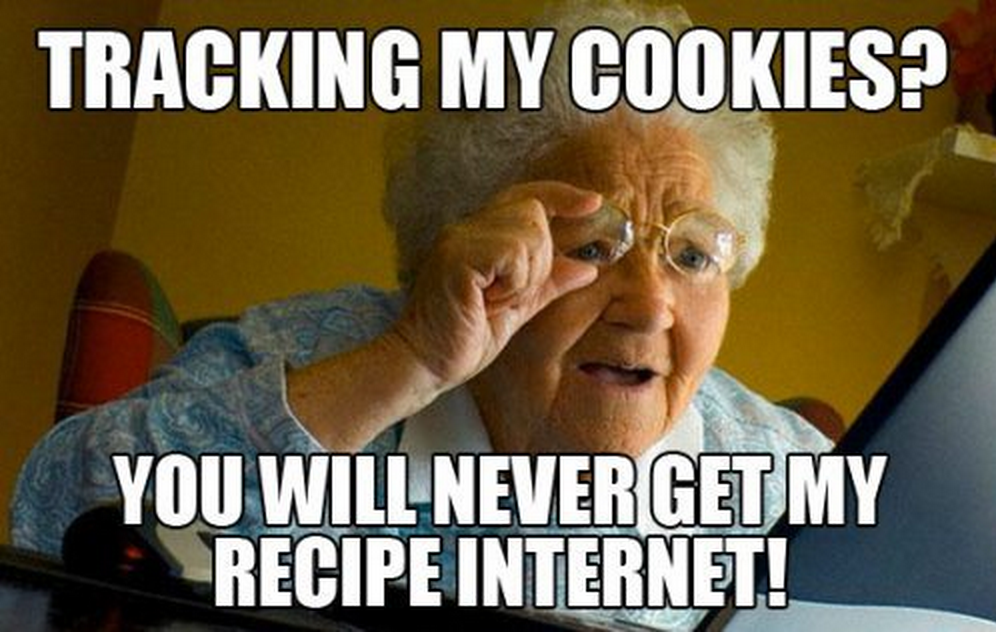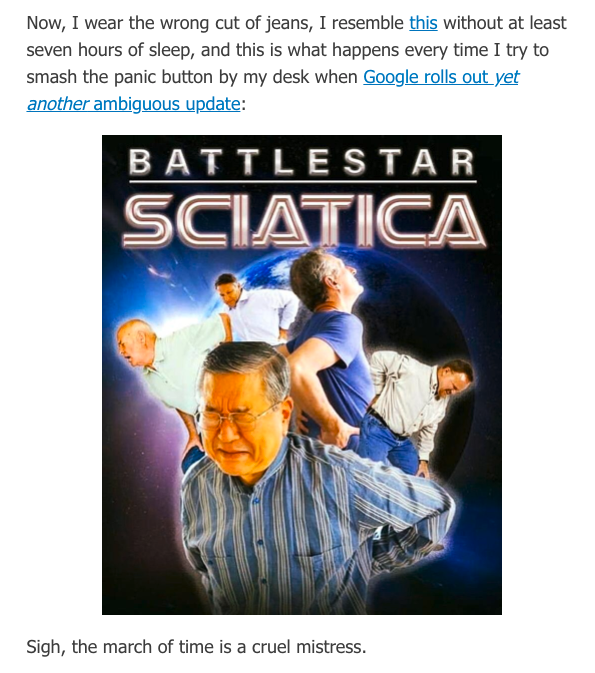Subscribe now and get the latest podcast releases delivered straight to your inbox.
Senior imagery in marketing at-a-glance
- Real talk, the demeaning visual stereotype of the bumbling senior completely befuddled by technology has persisted in meme culture and in our marketing for more than a decade. Not only is this demeaning, but it's also a grossly inaccurate representation of a very powerful demographic in our economy.
- The spending power of seniors – commonly referred to as the silver economy – continues to expand exponentially due to a variety of factors; it's estimated it will increase from $8.7 trillion to $15.7 trillion by 2030.
- Intergenerational fighting and the societal implications of the consolidation of wealth aside, the reality is seniors also possess the most wealth of any of the other buying groups, such as millennials and Gen Z.
- Additionally, according to new data from Google, all of those memes and "hilarious" images of doddering old people stymied by technology in their lives are completely inaccurate.
Why this story really matters to you, specifically
As business leaders, digital marketers, and sales professionals, I'd like to think we can all agree that conversations around diversity and inclusion matter and are important to be having.
However, while those broad conversations and themes apply here, I want to be very specific about why this information matters to your business and your bottom line:
- If you're creating content as a means to drive traffic, leads, and sales for your company, the imagery you use to augment or communicate your messages is not just window-dressing. The visuals you choose allow your ideal customers to see themselves as part of the experience of what you're offering. When you use imagery that positions a segment of your ideal customers (e.g., seniors) as a butt of a joke, you're going to turn them off.
- Also, if you've adopted a They Ask, You Answer approach to inbound marketing to drive more sales, you need to remember that the pool of ideal customers you have – the "they" asking all of those questions you're answering in your content – are likely more diverse than you think.
- Age is another factor you need to consider as part of your diversity and inclusion efforts in your inbound marketing, in addition to race, gender identity, neurodiversity, and so on – and that extends beyond the imagery you choose.
🎓 IMPACT+ course: They Ask, You Answer fundamentals with Marcus Sheridan
Marketers, we're perpetuating this ageist trope
The first step is admitting we have a problem, right? To be clear, my goal here is not to police what you do or don't find funny in your off-hours – I don't want you judging my F1 meme obsessions, so I'm not going to turn around and do the same to you.
🎓 IMPACT+ course: Fundamentals of social media marketing for businesses
Rather, the target of what we're talking about is stuff like this, because we've been encouraged to leverage memes in our marketing (when appropriate) to connect with our audience:



Since I am not in the business of shaming other digital marketers, I am not identifying where I found these images. However, the above memes are three that I have seen in the last week alone in content marketing for both B2B and B2C companies.
Also, I want to be fully transparent that I am guilty of this, too. As recently as earlier this week in an issue of THE LATEST:

Again, I am not here to tell you that you can't laugh at these images by yourself, in the privacy of your own home. You do you!
That said, relying upon these images featuring lazy stereotypes of infantilized seniors as a way to check the "use memes for marketing" box is not only potentially offensive to a segment of your ideal customers, it's bad for business.
Google's data about your senior customers
The reason these images are a turnoff to your senior buyers is that, well, they're completely inaccurate.
In fact, IMPACT Demand Generation Manager and DEI editor Ramona Sukhraj had this to say about it:
"It’s really interesting how dated marketers images of seniors are. We’re all guilty of it, myself included, but times have changed. For instance, both of my parents are over 55, but they’re walking around with iPads, Fitbits, and iPhones.
"They use computers and the internet at work every day. They’re researching purchases online just like millennials and Gen Z, not checking newspaper ads. How we portray and speak to this age group needs to reflect this shift.
"Heck, even Brad Pitt is 57!
"Just like we wouldn’t lean into stereotypes or old images of certain racial groups, we can’t do that with seniors and expect to reach them — let alone not offend them. We need to recognize and show what a modern senior really looks like if we’re going to resonate, build trust, and win their attention."
New data released from Google this week backs this up, and here are a few of the highlights for you to keep in mind as you reimagine what your ideal senior customer is really like:
- A majority of online seniors spend at least six hours a day online and own an average of five devices.
- These are what are called "sophisticated seniors," as 80% continued education beyond high school and 82% use their smartphones every day.
- Seniors aren't just boomers. The upper end of Gen X is now part of the senior crowd, with the oldest Gen Xers now being 55 years old.
- Seniors are spending less time watching traditional TV. Why? Time spent watching YouTube videos among adults 55 and over grew by 10% from May 2020 to May 2021, and that number is expected to continue to climb.
What this means for your company's strategy
I'm still coming to terms with the reality that I'm turning 40 next year since it feels like only yesterday I was making countless bad decisions as a 20-something living in Fort Lauderdale. Ah, the Malibu rum-soaked shenanigans of yesteryear ... I was such a putz. I blame The Hills.
Yet it's a reminder that, as we're all getting older, the assumptions we make about the silver economy are becoming more outmoded.
🎓 IMPACT+ course: Investing in your business website's user experience
Moreover, this is not a fact we can be passively mindful of, as we mull over diversity and inclusion and how it will impact our way of doing business (and marketing ourselves) going forward. The fact is, the buying power of seniors is increasing exponentially and they possess the most wealth out of any age group active in the economy today.
So, if you're looking to drive traffic, leads, and sales online and with your content, you still need to be focusing on the basics:
- Creating content (both written and video) that is laser-focused on the most pressing questions of your ideal customers.
- Investing in a business website user experience that is intuitive, buyer-focused, and makes it easy for your ideal customers to access exactly what they need, on their terms.
- Integrating video into your marketing strategies and your sales processes, as the demand for video continues to rise.
You also need to be very purposeful going forward with your imagery. Whether we're talking about seniors or another potentially marginalized group, something that's funny to you could end up turning off someone who could have been a customer.
Challenge yourself to innovate new ways to be funny (as a means to be "hashtag relatable" in your marketing) without it being at someone else's expense.


Order Your Copy of Marcus Sheridan's New Book — Endless Customers!

